The Mate 20 & Mate 20 Pro Review: Kirin 980 Powering Two Contrasting Devices
by Andrei Frumusanu on November 16, 2018 8:10 AM EST- Posted in
- Smartphones
- Huawei
- Mobile
- Kirin 980
- Mate 20
- Mate 20 Pro
Camera - Daylight Evaluation - Dynamic Range
Moving on to scenes that are most consistently in need of good HDR processing:
[ Mate 20Pro ] - [ Mate 20 ] - [ P20Pro ] - [ P20 ]
[ Mate 10Pro ] - [ Pixel 3 ] - [ Pixel 2 ] - [ Pixel XL ]
[ iPhone XS ] - [ iPhone X ] - [ Note9 ] - [ S9+ ] - [ S8 ]
[ LG G7 ] - [ LG V30 ] - [ OnePlus 6 ] - [ OPPO FindX ]
[ MIX2S ]
The first shot is the first one where the Mate 20 Pro finally seems to do better than the P20 Pro, with brighter shadows in the background of the cove. Oddly enough, the regular Mate 20 here does an even better job in this regard.
In the wide shot, the Mate 20 Pro yet again manages to produce a much wider dynamic range image than the Mate 20. Here the processing not only is able to bring out better shadows, but also does a significantly better job on the cobblestones’ textures. Both Mate phones again handily beat the result from LG’s phones.
[ Mate 20Pro ] - [ Mate 20 ] - [ P20Pro ] - [ P20 ]
[ Mate 10Pro ] -[ Pixel 3 ] - [ Pixel 2 ] - [ Pixel XL ]
[ iPhone XS ] - [ iPhone X ] - [ Note9 ] - [ S9+ ] - [ S8 ]
[ LG G7 ] - [ LG V30 ] - [ OnePlus 6 ] - [ OPPO FindX ]
[ MIX2S ]
This is another scene where the Mate 20 Pro does better than the P20 Pro, being able to tone down the highlights of the sky to expose the cloud textures as well as brighten up the shadows more than the sibling device. I feel as though this has a cost in terms of detail as we don’t see as good retention as on the P20 Pro throughout the scene’s foliage and stonework.
The Mate 20 produces a very similar shot in terms of overall composition, but loses out in terms of dynamic range in the darkest shadows. In terms of detail, it’s better over the Mate 20 Pro in the centre tree, but loses out in background detail.
While both phones do an acceptable job in terms of the composition, they could be just a little brighter. Here I think the iPhone XS leads the pack in terms of best exposure.
On the wide angle shots, the Mate 20 Pro again a better dynamic range and exposure than the Mate 20, as the latter is too dark. I do feel the M20Pro’s colour temperature of this shot is a bit too warm, but other than that the phone pretty much stands alone in terms of wide-angle quality, as LG’s G7 yet again produces a pretty atrocious image.
[ Mate 20Pro ] - [ Mate 20 ] - [ P20Pro ] - [ P20 ]
[ Mate 10Pro ] - [ Pixel 3 ] - [ Pixel 2 ] - [ Pixel XL ]
[ iPhone XS ] - [ iPhone X ] - [ Note9 ] - [ S9+ ] - [ S8 ] - [ LG G7 ]
[ LG V30 ] - [ OnePlus 6 ] - [ OPPO FindX ] - [ MIX2S ]
Moving on to the next scene, we find again the Mate 20 Pro producing a very different image to the P20 Pro – to the detriment of the new model, at least in my opinion. Here both the Mate 20 Pro and Mate 20 produce extremely similar results, but both have the result of favouring to push their dynamic range towards the darker parts of the image, where they do better than the P20 Pro, however this comes at a cost of a more blown out sky.
On the wide angle lens, the Mate 20 Pro again produces a much better and high dynamic range result than the Mate 20. The overall result of the M20Pro is just very good, and both phones fare significantly better than LG again.
[ Mate 20Pro ] - [ Mate 20 ] - [ P20Pro ] - [ P20 ]
[ Mate 10Pro ] - [ Pixel 3 ] - [ Pixel 2 ] - [ Pixel XL ]
[ iPhone XS ] - [ iPhone X ] - [ Note9 ] - [ S9+ ] - [ S8 ] - [ LG G7 ]
[ LG V30 ] - [ OnePlus 6 ] - [ OPPO FindX ] - [ MIX2S ]
In this shot, I think the Mate 20 does a better job than the Mate 20 Pro, as the exposure composition feels a lot closer to reality. Here the M20Pro again sees very different processing to the P20Pro, but the differences mostly lie in the colour renditions, and the Mate 20 Pro does better in resulting in more natural colours.
The wide angle lens on the Mate 20 Pro is again pretty fantastic, essentially standing on its own in terms of quality. The Mate 20’s shot is again less exposed with less dynamic range. Again both phones beat out LG’s results, although the V30’s colour temperature was the most accurate.
[ Mate 20Pro ] - [ Mate 20 ] - [ P20Pro ]
[ P20 ] - [ Mate 10Pro ] - [ Pixel 3 ] - [ Pixel 2 ]
[ Pixel XL ] - [ iPhone XS ] - [ iPhone X ] - [ Note9 ] - [ S9+ ]
[ S8 ] - [ LG G7 ] - [ LG V30 ] - [ OnePlus 6 ] - [ OPPO FindX ]
[ MIX2S ]
The next scene is a bit of a double-edged sword for the Mate 20’s, and both provide quite different results. The Mate 20 Pro produces a much higher dynamic range image than the P20 Pro, however this flattens the image quite a lot more than it should have. Here the iPhone XS and Pixel 3 were the nearest in terms of the actual lighting of the scene. The Mate 20 does better in this regard, and maintains better contrast throughout the image.
Switching over to the wide-angle lens, we see the Mate 20 Pro regain significantly more contrast, and again the overall result looks great. Comparing it to the Mate 20’s wide module, the latter again showcases a darker picture with less dynamic range.
[ Mate 20Pro ] - [ Mate 20 ] - [ P20Pro ]
[ P20 ] - [ Mate 10Pro ] - [ Pixel 3 ] - [ Pixel 2 ] - [ Pixel XL ]
[ iPhone XS ] - [ iPhone X ] - [ Note9 ] - [ S9+ ] - [ S8 ]
[ LG G7 ] - [ LG V30 ] - [ OnePlus 6 ] - [ OPPO FindX ] - [ MIX2S ]
The last daylight scenario is again pretty varied in terms of brightness levels, contains bright highlights in the trees as well as darker shadow elements. For some unfortunate reason, the P20 Pro was out of focus in this shot, which means we can’t do a proper direct comparison to the Mate 20 Pro. The new phone though did seem to produce a flatter image, and although the dynamic range and shadow retention is excellent, I feel like it needed more contrast. The regular Mate 20 does provide more contrast, but comes at a cost of shadow detail, so both phones are producing images in two different directions.
Finally, the last wide angle shot is again a massive win for the Mate 20 Pro, showcasing again extremely good overall dynamic range retention. It loses out details in the shadows, but that’s about the only negative for the shot. As we’ve now seen in the vast majority of scenes, the Mate 20’s wide shot again produces a flatter, less exposed image. Again, big picture quality advantages over LG’s wide angle shooters.
Daylight Conclusion
Overall the Mate 20 and Mate 20 Pro are two quite different phones when it comes to their still image cameras.
Starting off with the Mate 20 Pro, Huawei’s choice to reuse the same type of sensor as on the P20 Pro brings with it the same advantages and disadvantages. In daylight scenarios, the disadvantages outweigh the advantages. Like on the P20 Pro, the big sensor’s 40MP resolution is very rarely actually useable – the camera in this mode just lacks enough dynamic range in its shots and most of the time the resulting composition just isn’t good enough – although in perfect conditions it can vastly outperform many cameras.
In the 10MP mode, the sensor is able to take advantage of sensor-ISP based HDR processing with each pixel in the 2x2 bin using a different exposure to create a better image. This is still unique to the Mate 20 Pro and P20 Pro, however I feel like we’ve seen an overall regression in the overall processing when compared to the P20 Pro. Here the Mate 20 Pro still produces good images, but they don’t seem to have the same kind of leap that the P20 Pro had. It’s possible Huawei will iterate on its software processing here and try to bring in better results over time. In the end, I come to the same conclusion as on the P20 Pro: Because you’ll have to use the 10MP mode anyway, I feel like the phone would have been better off with a more traditional sensor along with OIS. Here the iPhone XS and Galaxy S9 sensors just have a significant advantage in spatial resolution at the same time as having great dynamic range.
In terms of telephoto modules, the Mate 20 Pro and P20 Pro still remain unmatched. Again here the processing between the two is quite different, and in some cases I prefer the P20 Pro’s results more.
On the Mate 20, the main camera is also a bit of a let-down. Here there’s no fancy sensor which can help it gain picture quality advantages. Unfortunately it lags behind most other phones in terms of dynamic range as well as detail. The processing was also problematic in some scenes, where there’s an evident noise reduction algorithm blurring out details and textures. It’s still a good and solid camera overall, but doesn’t manage to stand out compared to other high-end flagships.
The 2x telephoto lens of the Mate 20 is about on par with other phones, with again the drawback being less defined details that are seemingly caused by the image processing.
For both the Mate 20 and Mate 20 Pro, the standout features are meant to be the wide-angle camera modules.
For the Mate 20 Pro, this is a great hit and produces excellent images. Taking shots with much larger field of view is definitely a different type of experience, and is a great addition to the phones. The Mate 20 lags behind the Pro in terms of image quality, as its wide angle shots were always less exposed and offered less dynamic range. In terms of the competition, Huawei really only had to beat LG and its own game, and this it handily did. Unfortunately LG doesn’t seem to be fixing the image processing on the G7 any time soon, and while I didn’t have the V40 in this camera comparisons, it also largely shows the same issues as on the G7, with the Mate 20’s picture quality ending up being massively superior.



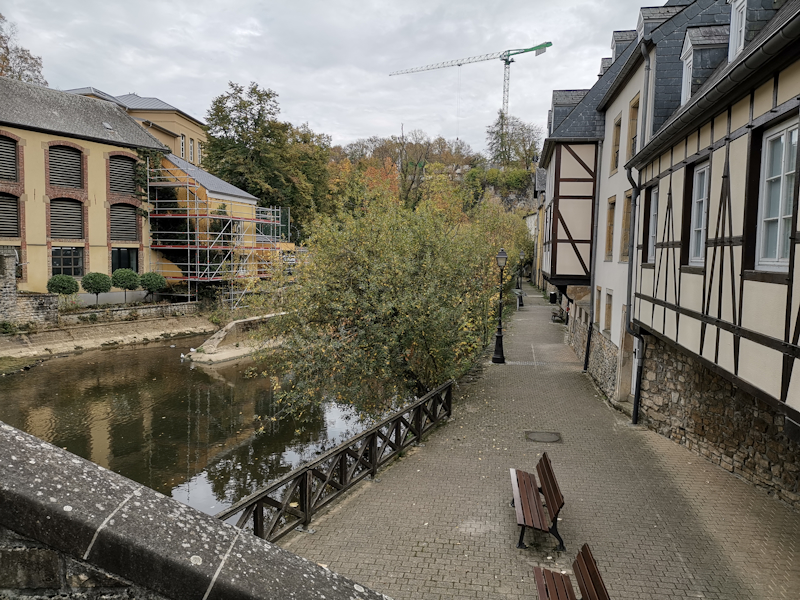
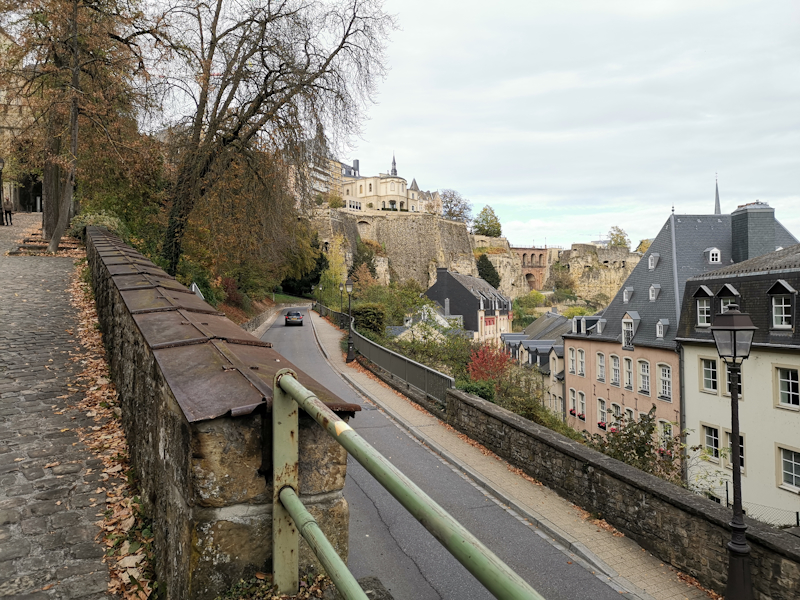
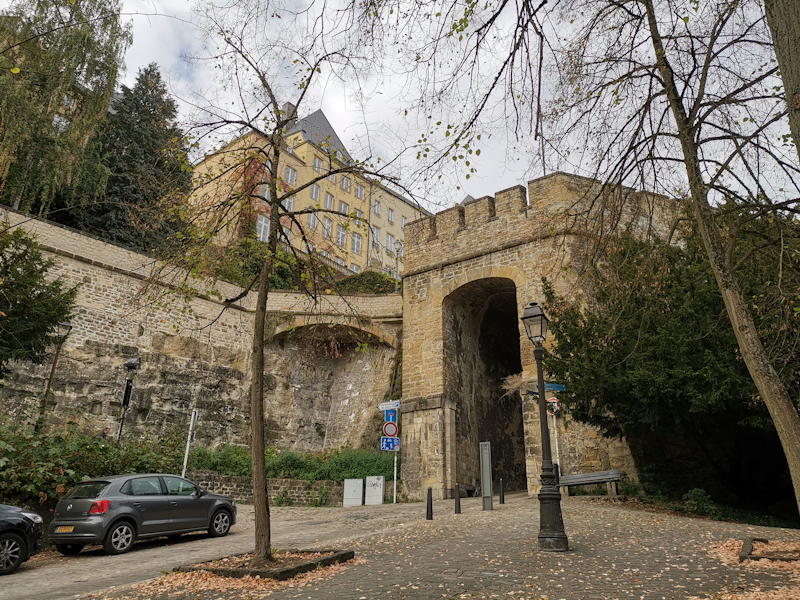
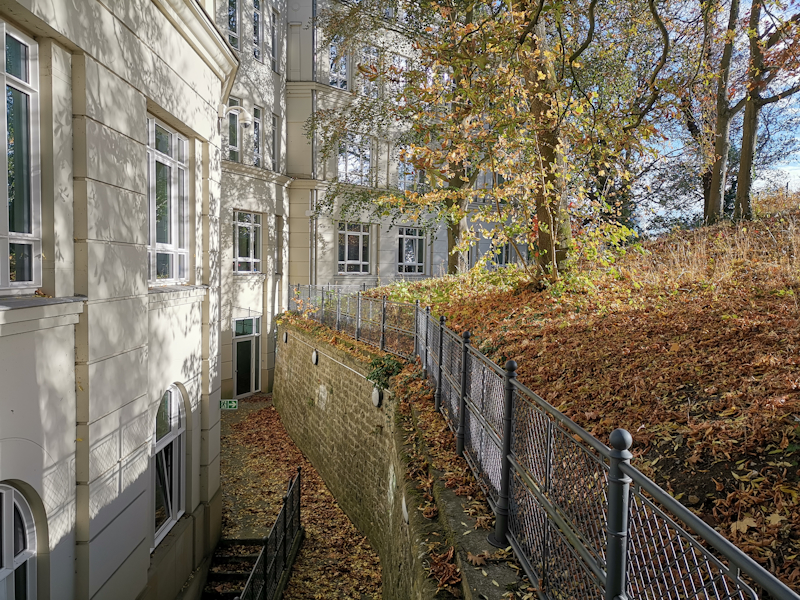
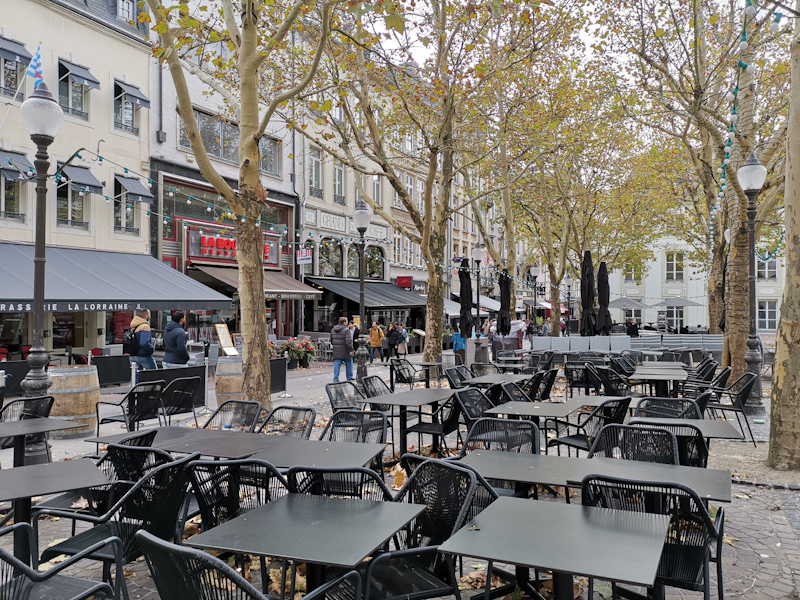








141 Comments
View All Comments
Andrei Frumusanu - Friday, November 16, 2018 - link
Nothing on the nanoSD, I don't even have any way to test it. As for storage, again I'm not posting any results in the review because the tools are broken/misleading. If it's any worth, both phones are leading in terms of Androbench performance.Chitti - Saturday, November 24, 2018 - link
Andrei, its almost 10 days.U didn't upload it yet 😓.
s.yu - Friday, November 16, 2018 - link
Samsung's body + Apple's notch, a popular opinion on the net.For the record Huawei's always "taking note" of somebody's design, they copied Sony's Omnibalance back with the P8, especially with that power button, moving on they've been closely following Samsung's design (S6,S7,S8) until the P20, in which they copied Apple, with the latest Mate20Pro, it's both, altogether.
Andrei Frumusanu - Friday, November 16, 2018 - link
I don't really agree with this (Beyond the P20's looking similar to the iPhone X), Huawei always had quite distinct designs in its phones, especially on the Mate series.s.yu - Friday, November 16, 2018 - link
Well for the P8 Huawei's own slide mentioning a "balanced design" following Sony's use of "Omnibalance" as well as the obvious resemblance in design did give them away, Huawei's Mate 9 Pro's a facelift of the S6/S7, and their subsequent so-called "Porsche Design" versions as well as the corresponding "Pro" versions all suspiciously follow Samsung's move in design philosophy from the S7 onwards. Then Apple's IPX and all...levizx - Saturday, November 17, 2018 - link
Well, that's quite a bold regarding P8, P8 looks nothing like SONY. By your logic, any phone that claims "slim" or "premium" would be clones.How else would you design a phone with 16:9 curved display with 3 years old technology, I'd like to see you try.
You have to be very stupid to think Mate 10/P20 series looks anything like S7/S8/iPhone being non-curved with front/back fingerprint readers.
So your logic is essentially - curved display: copying Samsung, non-curved display: copying Samsung, notch with fingerprint reader and triple camera: copying iPhone.
s.yu - Saturday, November 17, 2018 - link
That's some weak trolling.Let me tell you now how exactly the P8 looks like Sony's Xperia Z released earlier:
1. It's very boxy for its release date, compared to its peers only Sony of that era used such a design philosophy though Sony stuck to it for the many years to come while Huawei went on to copy Samsung the subsequent generation starting from Mate 9 Pro.
2. Sony's machine-milled power button was iconic in their Xperia Z and Z1, then Huawei came over, slightly changed the shape and stuck it onto an equally boxy body with suspiciously similarly named design philosophy.
How else would *I* design? That's not my problem, I'm not a team of engineers paid to innovate on a smartphone design after all, but HTC and Samsung both had unique solutions at the time, especially Samsung's S6 was an ingenious generational leap which pioneered the trend of glass-sandwich-metal bodies until this day.
When Huawei wasn't so obviously copying, well of course you know what happened, the unsightly Mate S, Mate 8 and Mate 9.
The Mate 9 Pro's screen was curved, together with the home button it's a straight Samsung S6E/S7E ripoff under a façade of "Porsche Design". At least get your basic facts straight before you troll.
I didn't say that the Mate 10 was a Samsung/Apple copy, you put that in my mouth. Not every Huawei is a copy, just that they copy somebody almost every generation, which also shows from their highly inconsistent, rapidly shifting design language, because they "borrow" from different opponents each year.
The P20 is a thorough IPX clone, up there with the Mi8, there's no doubt about that.
Quantumz0d - Friday, November 16, 2018 - link
Agreed.Press don't care unfortunately and that makes the marketing work. How else Huawei could gather all that. Look at Pixel 3XL its the best android phone according to press. Less features is more nowadays and you should pay more for the super cloned designs and submitting your ownership as well.
And it's China and their famous pro local IP theft game, no one can win there except their own.
levizx - Saturday, November 17, 2018 - link
What a stupid and racist troll. So in your mind Pixel XL is not a clone, but all Huawei phones are?Mate 10 Pro looks more like LG V30 than anything else, and they are only 2 months apart, no chance of copying at all.
s.yu - Saturday, November 17, 2018 - link
Look at you grasping at straws like that, the Mate 10 Pro may not be a copy, but Mate RS was a clear Samsung copy.